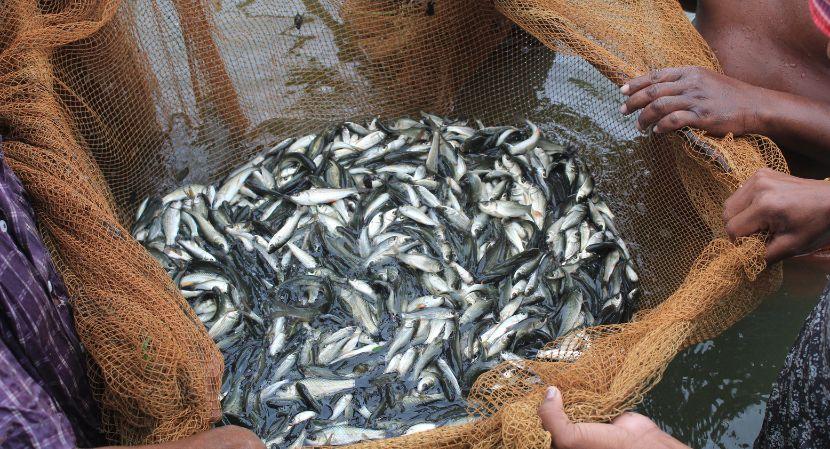The India fish market size, valued at INR 1,881.84 billion in 2024, is poised for significant growth. With a projected CAGR of 11% between 2025 and 2034, the market is expected to reach an impressive INR 4,813.81 billion by 2034. This growth underscores the increasing demand for fish as a source of nutrition, livelihood, and economic contribution to the country’s agriculture sector.
This blog explores the market dynamics, key growth drivers, challenges, emerging trends, and segmentation insights shaping the future of India’s fish market.
Overview of the Indian Fish Market
India ranks among the largest producers of fish globally, thanks to its extensive coastline, numerous rivers, and burgeoning aquaculture industry. Fish serves as a vital source of protein for millions and plays a crucial role in supporting livelihoods, particularly in coastal and rural regions.
The sector encompasses capture fisheries and aquaculture, contributing significantly to the GDP and providing employment to millions of people across the country.
Key Drivers of Market Growth
1. Rising Demand for Protein-Rich Foods
Consumers increasingly prioritize health and nutrition, driving the demand for fish as a rich source of protein, omega-3 fatty acids, and other essential nutrients.
2. Growth of Aquaculture
India's aquaculture industry is expanding rapidly, supported by advancements in farming techniques, government initiatives, and the availability of quality feed and seed. Freshwater fish farming, in particular, has seen notable growth.
3. Increasing Exports
India’s fish exports continue to rise, fueled by global demand for seafood products like shrimp, freshwater fish, and processed fish items. The country remains a leading exporter of frozen shrimp and other value-added products.
4. Government Support and Policies
Initiatives like the Pradhan Mantri Matsya Sampada Yojana (PMMSY) aim to modernize fisheries, increase production, and ensure sustainable practices. Subsidies, infrastructure development, and training programs further bolster the sector.
5. Expanding Domestic Market
The growing middle class, urbanization, and changing dietary preferences contribute to increasing domestic consumption of fish and seafood, particularly in urban and semi-urban areas.
Challenges in the Indian Fish Market
1. Overfishing and Sustainability Issues
Overfishing in coastal and inland waters poses a threat to fish stocks and biodiversity, impacting long-term sustainability.
2. Environmental Concerns
Pollution in water bodies, habitat degradation, and the impacts of climate change hinder fish production and quality, posing challenges for producers and exporters.
3. Limited Cold Chain Infrastructure
India’s fish market faces significant post-harvest losses due to inadequate cold storage and transportation infrastructure, affecting the quality and shelf life of fish products.
4. Disease Management in Aquaculture
Outbreaks of diseases in aquaculture farms can lead to significant economic losses and reduced productivity, emphasizing the need for better health management practices.
5. Skill Gaps and Technology Adoption
The sector lacks sufficient technical expertise and adoption of modern farming methods, limiting growth in certain regions.
Emerging Trends in the Indian Fish Market
1. Growth of Processed and Value-Added Products
The rising demand for convenience foods drives the production of processed and ready-to-cook fish products, appealing to urban consumers and export markets.
2. Expansion of E-Commerce Channels
Online seafood delivery platforms are gaining popularity, providing consumers with easy access to fresh fish and seafood products. These platforms also support local fishermen by connecting them to a broader customer base.
3. Focus on Sustainable Practices
Producers are increasingly adopting sustainable fishing and aquaculture practices, including eco-friendly feed, disease control measures, and certification programs.
4. Technological Advancements in Aquaculture
Innovations like biofloc technology, recirculating aquaculture systems (RAS), and automated feeding systems enhance productivity and reduce environmental impact.
5. Rising Popularity of Exotic and High-Value Fish
High-value species such as pomfret, seabass, and shrimp are witnessing growing demand in both domestic and export markets, driving diversification in fish farming.
Key Market Segments
By Type
- Capture Fisheries: Includes marine and inland fisheries, driven by traditional fishing practices.
- Aquaculture: The fastest-growing segment, supported by advancements in farming technologies and government policies.
By Product Type
- Freshwater Fish: Dominates the market, with species like rohu, catla, and pangasius leading production.
- Marine Fish: Includes tuna, mackerel, and sardines, widely consumed across coastal regions.
- Processed and Frozen Fish: Witnessing rising demand in urban areas and export markets.
By End-User
- Households: Largest segment, driven by dietary preferences and affordability.
- Foodservice Industry: Includes hotels, restaurants, and catering services with significant demand for high-quality fish.
- Export Markets: A key contributor to revenue, particularly for shrimp and frozen fish products.
By Region
- Coastal States: Andhra Pradesh, Tamil Nadu, and Kerala lead production, driven by marine and inland fisheries.
- Inland Regions: Witness rapid growth in freshwater aquaculture due to supportive infrastructure and investments.
Future Outlook
The Indian fish market is poised for robust growth, supported by expanding aquaculture, rising domestic consumption, and increasing exports. Addressing challenges such as sustainability, infrastructure, and skill development will be crucial for maximizing the sector’s potential. Innovations in technology, coupled with government support, will further strengthen the market.

